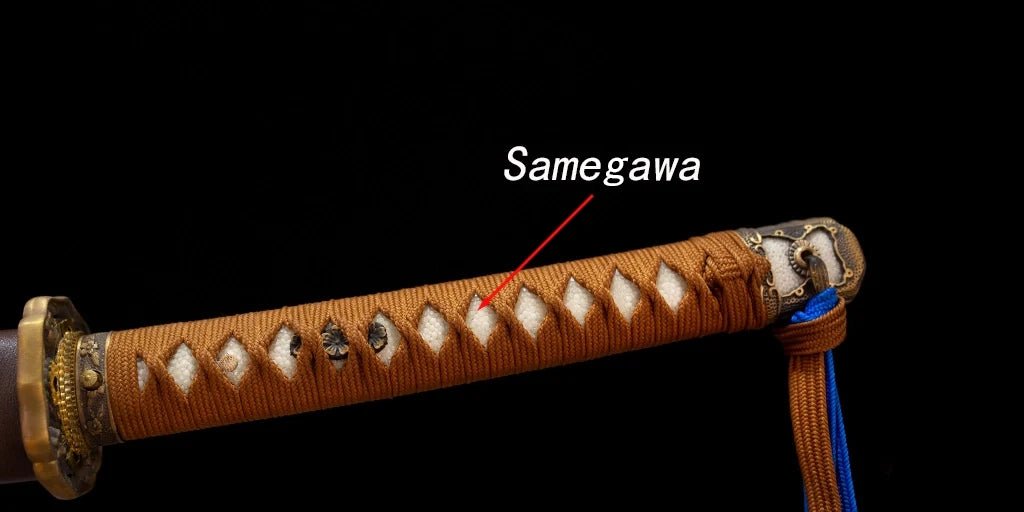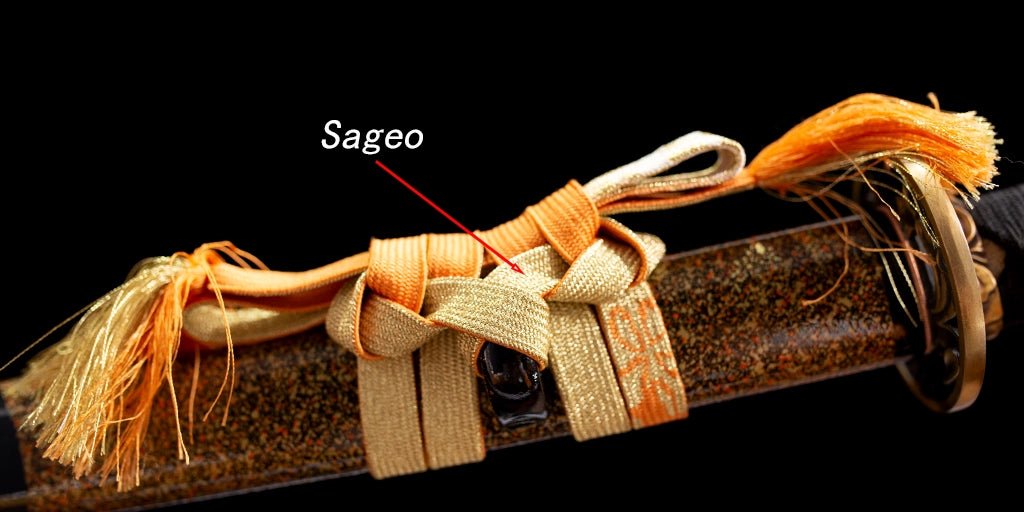Mekugi: Props used to fix the handle and nakago


The mekugi made of bamboo is a cylindrical shape with a diameter of about 5-7mm


In ancient times, metal mekugi was also used, but in practical combat, due to the strong impact exerted on the blade, the metal would undergo "plastic deformation", resulting in the blade becoming loose and the mekugi could not be pulled out.

The most suitable material for making mekugi is bamboo harvested during the winter solstice and dried for three years, and soaked in plant-based oils such as camellia oil and rapeseed oil to increase its strength.

In addition, coal bamboo is also quite suitable for making mekugi. The so-called coal bamboo refers to the bamboo that has been smoked black for hundreds of years in the attic and ceiling of ancient residential buildings. The surface is brown, and the interior also turns into a brown coal bamboo, which is stronger and more elastic than ordinary bamboo.

Suiryuken-water dragon sword
The position of mekugi ana also changed significantly before and after the Nara era. In the Nara era, jokoto was the mainstream. Mekugi-ana was usually beaten near the "tail of nakago". Japanese national treasures such as heishishorin and suiryuken can clearly see this situation. Since the emergence of the anti Tachi, mekugi-ana has been beaten near the "Chi" and held the blade vertically, Most of them will be placed in the center of okoto in the left and right directions
Fixation method of swords
Is there any other method to fix the handle besides the wood nail method? The answer is obvious,
1: As the name suggests, the wood chip wrapped rope type is to reserve a long enough handle during forging, then stick a suitable wood chip on both sides, and then wrap an anti-skid rope. It is very firm and low-cost.

2: Glue filling type: glue filling type is to apply a special strong glue on the handle of the sword and then take out a suitable hole on the wood to fix it directly with glue. Of course, the requirement for glue is obviously high, otherwise the handle is very easy to loosen. Generally, this fixation method appears on the shorter sword
3: Eye nail fixation: this fixation method is similar to Katana's fixation method. It first appeared on Chinese sword, and then improved by Japan to become a well-known fixation method. The disadvantages of eye nail fixation method are also very obvious. The advantage is that it can be disassembled at any time to maintain the blade, or replace parts. The disadvantage is that the eye nail is very easy to be damaged after battle, and needs to be repaired frequently
4: Fixed type of rivet at the tail: enough length is reserved by forging at the tail of nakago, and the tail is burned red until the handle is installed and smashed flat to maintain the firmness of the handle. One is used with mekugi, which is also the most secure fixation method. The disadvantage is that it cannot be removed at any time. If it needs to be removed, the wood on the handle must be replaced



Leave a comment
This site is protected by hCaptcha and the hCaptcha Privacy Policy and Terms of Service apply.